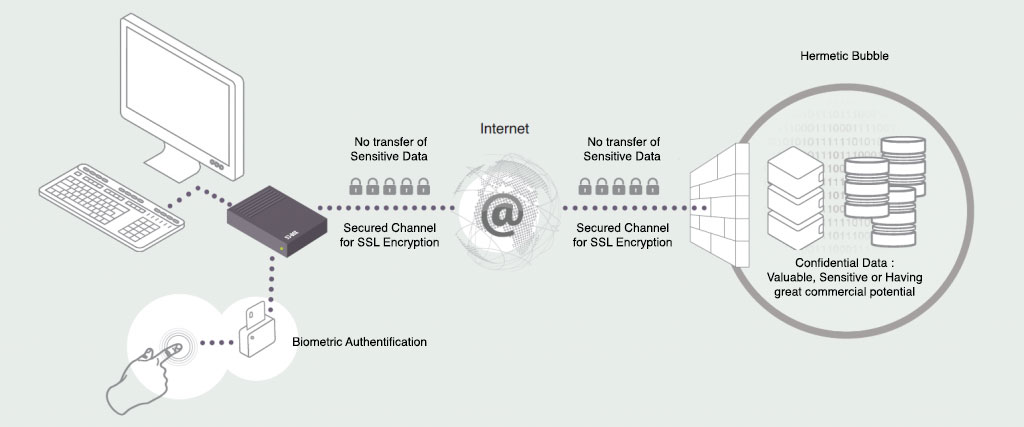A dedicated secure infrastructure: “The bubble”
The SD-Box enables access remotely to a secure infrastructure where confidential data is safe from harm. This storage and processing environment is referred to as “the bubble”.
The SD-Box was conceived with this in mind, and is very easy to install, replace and update remotely. Coupled with the central IT infrastructure, it constitutes the corner stone of the CASD safety mechanism.
Data
In the public sector, CASD makes Insee data available, as well as data from the Justice, Education, Agriculture and Finance ministries. A decree (2013 ESR law) was published for the tax data in 2014 so they could be made available. The decree explicitly named CASD as the conduit.
Regarding Health data, the need to secure access is the same, but the nature, use and volume of the data are different. Users are more diversified: doctors, epidemiologists, bio-statisticians and health data analysts, etc.
Health data can quickly accumulate, rapidly becoming heavy datasets, especially when genomics or imagery are part of the datasets. New matching opportunities also automatically increase the data volume.
In the private sector, many companies have used CASD to enhance security of their data while providing external access to it for collaborating with researchers, start-ups or consultants. This is the case for Banque Postale, Générali, Banque publique d’investissement (Bpifrance), BNP Paribas, ERDF, RTE and more. In the case of RTE, a secure Datalab was set up to work with big data technologies in a remote secure environment.
For these companies, letting CASD host their data was a way to address their needs for security while enabling innovative collaborative studies to be conducted with the participation of external parties. These examples are set in the “open innovation” current trend for start-ups, combining the know-how with research and innovative capacities.
These days, data security raises numerous questions about the technical difficulty of anonymizing data and legal questions about personal data rights.

